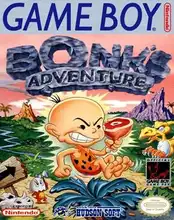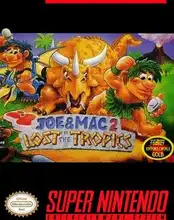The call of the wild... the really wild past! For many of us who grew up glued to a CRT screen in the 80s and 90s, the concept of prehistoric games immediately conjures images of pixelated dinosaurs, frantic escapes, and maybe, just maybe, Dr. Alan Grant looking slightly bewildered. While the term could technically cover anything from ancient Rome to caveman capers, let's be honest, when retro gamers talk prehistoric, they usually mean one thing: dinosaurs. And often, that means revisiting the sprawling, sometimes frustrating, but undeniably iconic legacy of the Jurassic Park games.
These weren't always masterpieces, mind you. Licensed games from that era could be a real mixed bag. But they tapped into the sheer, unadulterated cool factor of giant lizards trying to eat you. Let's dust off those cartridges (or ROMs) and take a trip back to Isla Nublar and beyond.
The Roar of the 16-Bit Era: Jurassic Park Dominates
When the first Jurassic Park movie hit in 1993, it wasn't just a cinematic event; it was a merchandising explosion. And video games were right there, eager to capitalize on the dino-mania. Ocean Software and Sega cranked out multiple titles across nearly every major platform.
- Jurassic Park (SNES): This one often comes to mind first for SNES fans. It was an isometric action-adventure where you played as Dr. Grant, navigating mazes of corridors and outdoor areas, shooting dinosaurs with various weapons. It had a top-down map mode and switched to a first-person perspective indoors. Clunky? Absolutely. Mazelike? You bet. But it felt like an adventure, even if you spent half your time lost or getting cornered by raptors.
- Jurassic Park (Genesis): Sega took a different approach. This version offered two playable characters: Dr. Grant in a standard side-scrolling run-and-gun platformer, or a Velociraptor in a more melee-focused adventure. The graphics were arguably sharper, and the choice added replayability, even if the platforming could be janky and the objectives sometimes vague. The Raptor's motivation was... questionable, but hey, you got to be a dinosaur!
- Jurassic Park (NES/Game Boy): Ocean also brought the terror to the 8-bit systems. The NES version was another isometric shooter, similar in concept to the SNES but visually simpler and slower. The Game Boy version was essentially a portable, monochrome take on the same formula. Less complex, maybe, but still a decent attempt to capture the feel on limited hardware.
Chaos and Rampage: Sequels and Spin-offs
The success of the first games led to follow-ups, trying to recapture that prehistoric lightning in a bottle.
- Jurassic Park Part 2: The Chaos Continues (SNES): This sequel pivoted to a more straightforward 2D run-and-gun shooter style, similar to games like Contra or Alien 3. You played as Grant or a random dude named Tim (because why not?), blasting your way through waves of dinosaurs and human enemies. It was less about exploration and more about action, though perhaps a bit generic compared to the ambitious (if flawed) original.
- Jurassic Park: Rampage Edition (Genesis): This was the Genesis sequel, often considered the best-looking of the bunch. It doubled down on the action, feeling even more chaotic than the first Genesis game. It featured larger levels, multiple playable characters (Grant, the Raptor, and even a Compsognathus!), and plenty of explosions. It was visually impressive but could be incredibly frustrating with its level design and enemy placement.
Revisiting Prehistoric Games Today
So, how do you play these slices of prehistoric gaming history now?
- Original Hardware: If you've still got your old consoles and carts, fire 'em up! Nothing beats the authentic feel (and maybe the smell) of retro hardware.
- Emulation: For PC users, emulators like Kega Fusion (Genesis) or SNES9x (SNES) offer a fantastic way to play these games with save states, filters, and controller support.
- Digital Stores: Platforms like GOG.com occasionally feature classic licensed titles, though the rights situation for JP games can be complex. Keep an eye out!
- Classic Collections: As seen with the recent Jurassic Park Classic Games Collection, publishers are bundling these old games for modern consoles (Switch, PlayStation, Xbox). While the quality of the collection features themselves can vary (some offering bare-bones ROMs, others adding save states, maps, and filters), they provide an easy way to access multiple titles legally on current systems.
Playing these games again today is a trip. The controls can feel stiff, the graphics blocky, and the level design sometimes baffling. But there's a charm there, a raw energy that comes from a time when developers were figuring things out, and dinosaurs were the coolest thing imaginable. These prehistoric games might not all stand the test of time as gameplay paragons, but they certainly earned their place in the retro gaming ecosystem, reminding us of a simpler time when escaping a pixelated T-Rex was peak excitement.
FAQ: Frequently Asked Prehistoric Questions
- Are there other retro prehistoric games besides Jurassic Park? While Jurassic Park was the most prominent, games featuring cavemen (like Joe & Mac) or other ancient settings could loosely fit the "prehistoric" theme, but dinosaur games were the main focus in the 8 and 16-bit eras.
- Which retro Jurassic Park game is considered the best? It's subjective! The SNES and Genesis versions of the first game are often the most debated. The SNES had atmosphere, the Genesis had variety. The sequels are generally less critically acclaimed than the originals.
- Can I play these classic Jurassic Park games on modern consoles? Yes, the Jurassic Park Classic Games Collection bundles several titles (NES, Game Boy, SNES, Genesis versions of JP1, JP2, and Rampage Edition) for modern platforms like Switch, PlayStation, and Xbox.
- Why were these old licensed games often so difficult or clunky? Licensed games in the 90s were often developed quickly to coincide with movie releases. This sometimes led to rushed development, tight deadlines, and less polished gameplay compared to original IPs.



